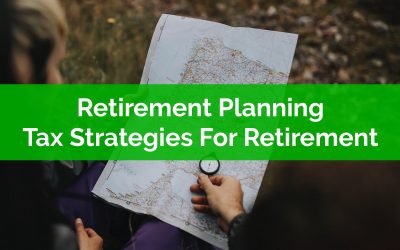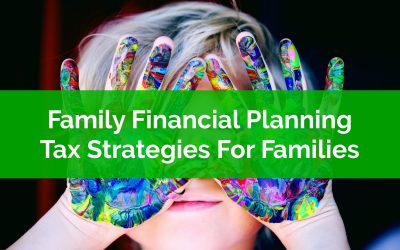Congratulations! You’re on the waitlist!
We will e-mail you before the bootcamp launches for an exclusive preview.
Check out our latest blog posts…
Retirement Planning: Tax Strategies For Retirement
Taxes and benefit claw backs are one of the largest expenses that a retiree will face. But with some careful planning we can minimize the impact of these expenses in retirement. Minimizing taxes and benefit claw backs will mean that a retiree can retire on less, spend more in retirement, and have a more secure retirement.
The median income for a retiree is around $36,050 for an individual and $64,800 for a couple but each source of income is taxed very differently. Even with the same income, one retiree could pay way more tax than another retiree even with the exact same income.
When it comes to retirement planning there are a couple of important strategies that we always want to follow. We always want to aim for 50/50 income splitting in retirement and we always want to be very careful about the types/amounts of retirement income when a retiree is eligible for GIS.
When planning tax strategies for retirement we always want to look at the marginal effective tax rate, not just income tax rates. Marginal effective tax rate (METR) is the combination of income tax rates and government benefit claw back rates. METR is the combined impact of tax & benefits on the next $1 of income.
METR is the most important factor to consider when creating tax strategies for retirement. At the end of this post we’ll look at marginal effective tax rate for a couple of specific retirement scenarios.
Family Financial Planning: Tax Strategies For Families With Children
Families in Canada have a very unique financial planning opportunity that isn’t available to other Canadians. This opportunity can help boost their savings and provide them with more cash flow to save in the future. With a bit of careful planning families can reduce their overall marginal effective tax rate and save more money.
First, a little background…
In Canada, there are two types of “tax rates”. The first is income tax. This one is easier to understand. As your income increases you pay more income tax. The second tax rate is actually a “benefit claw back rate” and it works the same way as tax rate, the more your income increases the less you receive in benefits. In Canada, most government benefits are “clawed back” based on household net income. This means that as you earn more income your benefits will be reduced, or “clawed back”, and the effect is the same as income tax.
Families have a unique tax and financial planning opportunity because some government benefits don’t get clawed back until family income is well into the $100,000+ range. This means there are certain tax strategies that are unique to families, even those with above average incomes.
All families with children under the age of 17 are eligible for the Canada Child Benefit (CCB). The Canada Child Benefit is one of the most generous benefits in Canada, it’s even available to high-income earners, but it also has one of the highest claw back rates too. But, with careful planning it’s possible to avoid some of these claw backs, increase your annual benefit, and as a result increase your annual savings as well.
Claw back rates on the Canada Child Benefit range from 3.2% to 23% for each extra dollar you earn. The exact claw back depends on the number of children and your household net income.
The claw back means that if you earn an extra $1,000 this year, your benefit could be reduced by $32.00 to $230.00 next year!
This is even higher for low-income families who also receive other government benefits, like the GST/HST credit or Trillium benefits in Ontario, which all have claw back rates as well.
The opportunity for families is that RRSP contributions will DECREASE their taxable net income and will INCREASE their benefits. That means that a $1,000 RRSP contribution this year will INCREASE your Canada Child Benefit by $32.00 to $230.00 next year!
This means that families in particular can strategically save using an RRSP instead of a TFSA and boost their government benefits. This is counter to most financial advice that suggests low-income Canadians should prioritize their TFSA first. While this advice might be true for many low-income Canadians, it’s not necessarily true for families.
We’re going to take a look at four examples to show you just how impactful this type of financial planning can be.
Note: These are examples only, specific to Ontario, and should not be used for financial planning purposes. Income tax and benefit rates are very dependent on family income, income split, ages of children, province of residence etc. To understand the impact for your family we recommend building a custom financial plan with an advice-only financial planner.
Why You Shouldn’t Put Off Wills And Estate Planning
Note: The following is a guest post from lawyer Manda Ivezic. Manda practices in real estate, wills & estates, and small business law in London, Ontario and provides wills at a very reasonable rate of $300 for an individual and $475 for a couple.
A recent LawPRO survey estimated that 56% of adult Canadians don’t have a will. Wills were least common for 27-34 year olds, 88% didn’t have one, and 71% of respondents didn’t have a power of attorney at all.
Why do so many of us put off wills and estate planning? Common reasons to delay estate planning include:
You’re too young to anticipate your death – you see yourself living a long and full life, dying of old age far in the future. You have plenty of time ahead of you to take care of your will.
It’s overwhelming or unpleasant to think about.
You think it’s unjustifiably costly.
You don’t think you’re wealthy enough to need a will.
You don’t realize how important it is, because you don’t understand what exactly will happen in the absence of a will or power of attorney.
The problem with putting off wills and estate planning is that you can’t safely assume how the future will play out.
Delaying may mean it never gets done – an accident or illness could make you incapable of creating a will. Not preparing will and estate plan only makes a bad situation worse. The consequences of dying without a will can easily outweigh the time and lawyer’s fee.
As well, a lawyer’s input can result in substantial cost savings down the line compared to the upfront cost, maximizing what is left to your beneficiaries. A will also saves time and trouble down the road. At the very least, appointing an executor will prevent someone having to apply to court to be appointed as your estate’ executor – an avoidable burden at the worst time for your family.
Get this task out of the way and give yourself peace of mind. Here’s what you need to know when creating a will and estate plan…



